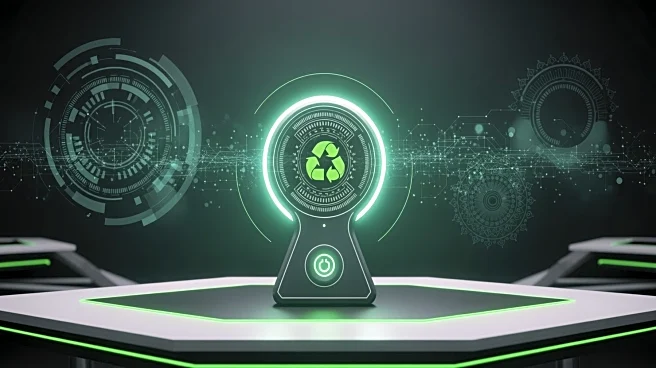What's Happening?
Researchers from the 5G and 6G Innovation Centre, including Qihao Peng, Qu Luo, and Zheng Chu, have introduced a novel wireless communication architecture that integrates Rydberg atomic receivers with
simultaneous wireless information and power transfer (SWIPT) technology. This system aims to eliminate the need for batteries in Internet of Things (IoT) devices by allowing them to harvest energy from wireless signals. The architecture combines conventional radio frequency transmission for downlink communication with Rydberg atomic receivers for uplink signal reception. The team has developed mathematical models to optimize signal transmission and power harvesting, demonstrating the potential for self-sustaining wireless networks capable of detecting weak signals. This research represents a significant advancement towards environmentally friendly communication systems.
Why It's Important?
The development of Rydberg atomic receivers for IoT devices could revolutionize wireless communication by enabling battery-free operation, which is crucial for sustainable and energy-efficient networks. This technology has the potential to significantly reduce the environmental impact of IoT devices, which are increasingly prevalent in various industries. By eliminating the need for batteries, the system could lower maintenance costs and improve the reliability of IoT networks, particularly in remote or hard-to-access locations. The research also highlights the interdisciplinary collaboration between physics, electrical engineering, and computer science, paving the way for future innovations in wireless communication and energy harvesting technologies.
What's Next?
Future research may focus on refining the performance of Rydberg atomic receivers and developing more efficient signal processing algorithms. The team suggests exploring quantum-inspired techniques and alternative optimization algorithms to enhance system performance and reduce computational complexity. Additionally, improvements in antenna design and energy harvesting techniques could mitigate signal attenuation, further enabling real-time implementation in practical wireless networks. As the technology progresses, it could lead to widespread adoption in various sectors, including industrial IoT applications that require high reliability and low latency.
Beyond the Headlines
The integration of Rydberg atomic receivers with SWIPT technology presents ethical and legal considerations regarding the deployment of battery-free IoT devices. As these systems become more prevalent, regulatory frameworks may need to address issues related to energy harvesting and wireless communication standards. Furthermore, the cultural shift towards sustainable technology could influence consumer behavior and industry practices, promoting environmentally friendly solutions in the tech sector.











